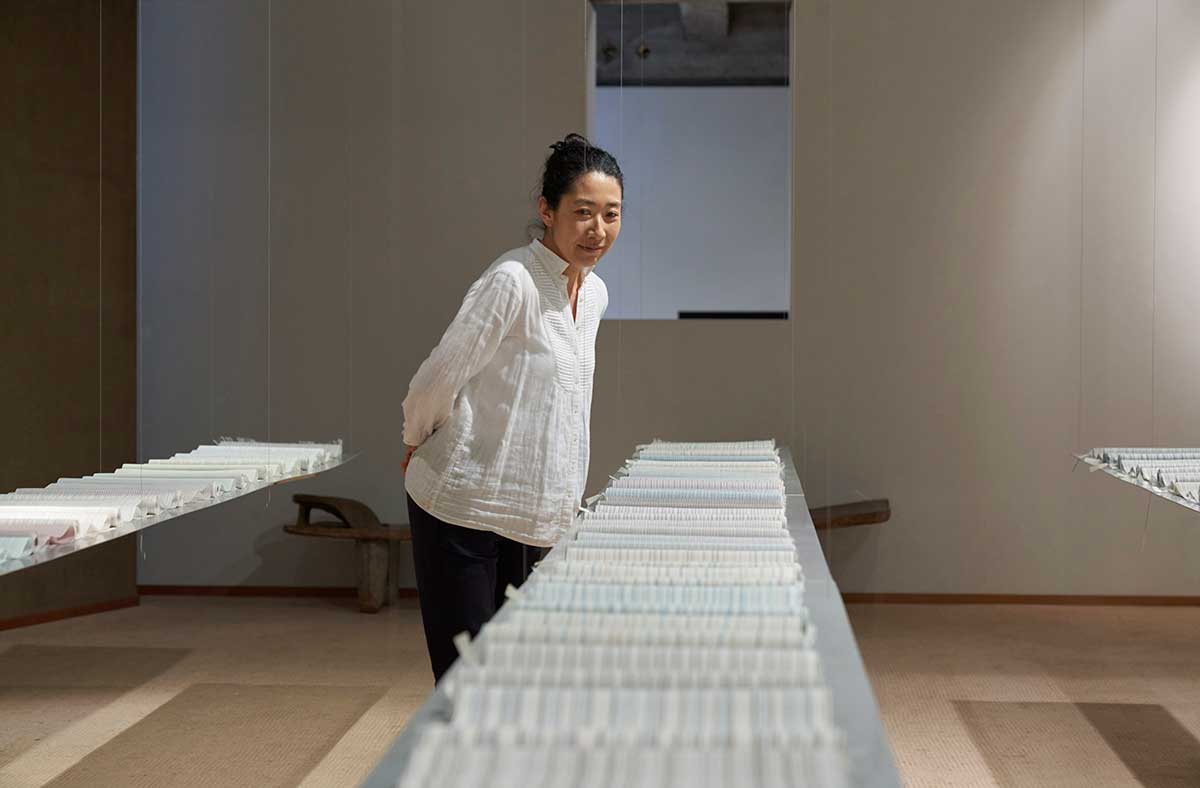ものが存在するとはどういうことなのだろう
そこから生まれ出る気配、たたずまいとは何なのだろう
人は何に対して気づきを覚え、方向を見いだすのだろう
ものをつくることでそのことに触れてみたい
存在の立ち上がるぎりぎりの瞬間をおさえたい

美術を志し、無限の空間に自由に点を描くことを夢見ていた私が導かれたのは
日本の風土と歴史によって築き上げられてきた夏の着物の世界でした。
半透過な無数の交点から成り立つ ころも、
湿潤な日本の夏の空気の中で人に寄り添う ころも、
夏の光と風に生かされる ころも、
その佇まいをイメージし続けること。
それらがもたらす要素と制約は、限りなく自由なイマジネーションと現代に生きる意義を
私に与え続けています。
From my fine art aspirations and dreams of freely drawing dots in infinite space, I was eventually led to the world of the summer kimono, which was built from the cultural climate and history of Japan.
Semi-transmissive textiles made up of innumerable intersections of thread,
textiles that are drawn close to people in the humid air of Japanese summers,
textiles that come to life in the light and wind of summer:
It is the continual contemplation of these conditions and characteristics to which I have been led.
The factors and limitations brought about by these summer kimono continue to stimulate free, limitless imagination, and provide meaning for living in these modern times.
牧山花
1971年 東京生まれ
東京造形大学(絵画科)を卒業後、京都、沖縄で染織を学ぶ。
沖縄宮古島では重要無形文化財である宮古上布の技術を習得。
1998年から1999年、1年間ヨーロッパ〜アジアを旅し、建築や空間構成に興味を持つようになる。
2000年より神奈川県湯河原在住。
絣の技法を用いた織物による空間表現をへて
2006年、きものの制作を開始。
以降、夏の着物に特化した布づくりを、デザイン、染め、織りの工程全てを一人で行い、発表を続けている。
素材には当初から絹と麻の天然素材、染めは草木染めによる天然染料を用いている。
Hana Makiyama
1971 Born in Tokyo
After graduating from Tokyo Zokei University (Painting Department), studied dyeing and weaving in Kyoto and OkinawaLearned the skills of Miyako-jofu, premium woven ramie textiles for kimono (which is recognized as an Important Intangible Cultural Property), on the island of Miyako-jima in Okinawa
1988 - 1999 Travelled Europe and Asia for one year, becoming interested in architecture and spatial composition
2000 Moved to Yugawara in Kanagawa prefecture
2002 - 2005 Created installations using fabric woven by ikat hand-dyeing techniques
2006 Started creating summer kimonos
2006 - present Focusing on the creation of unlined kimono and midsummer kimono textiles, including personally completing all aspects of the process — designing, dyeing, and weaving — and continuing to exhibit
Works have from the very beginning been made exclusively with natural raw materials (silk and hemp), and natural plant dyes

photo by 小林敏伸